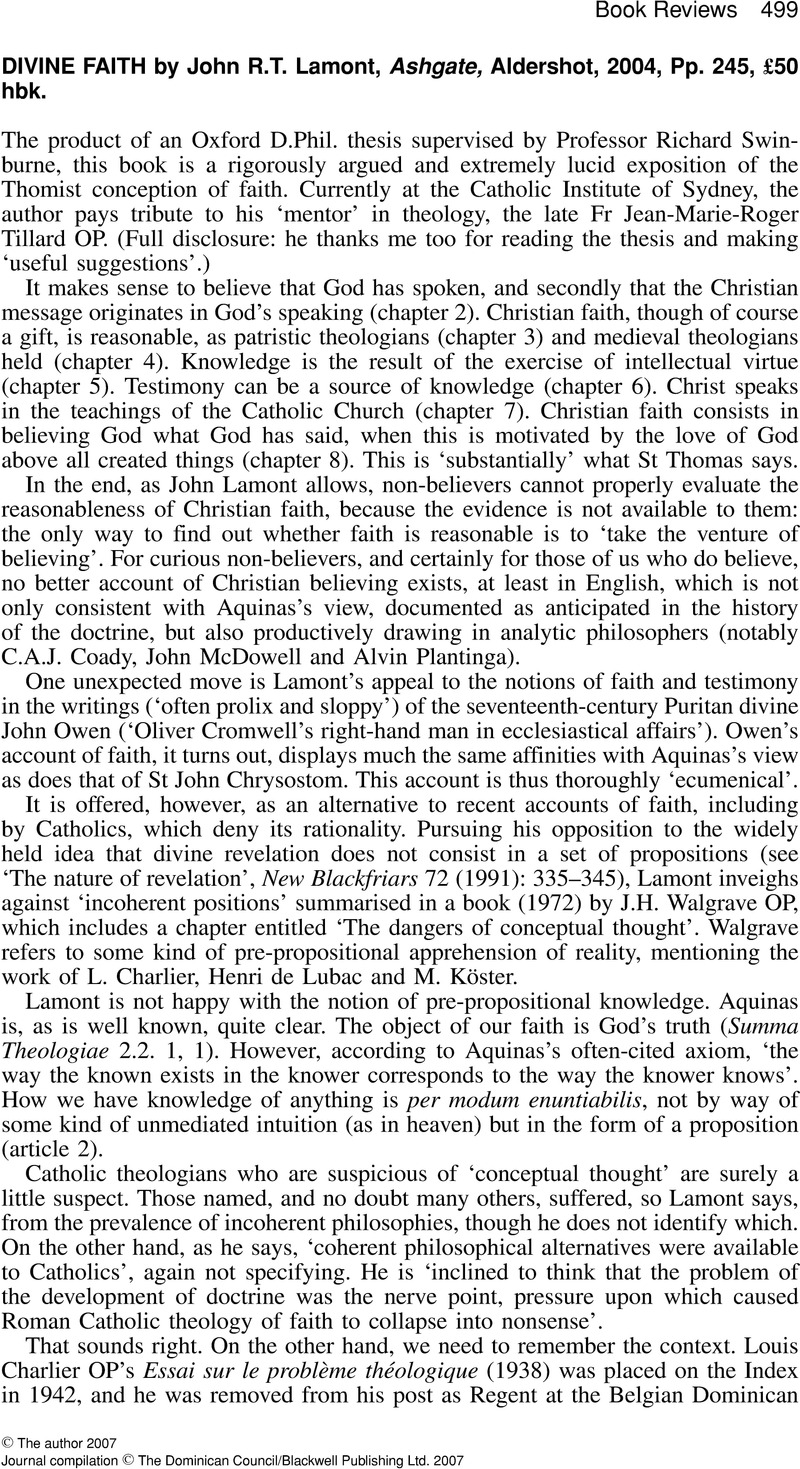No CrossRef data available.
Article contents
Divine Faith by John R.T. Lamont, Ashgate, Aldershot, 2004, Pp. 245, £50 hbk.
Review products
Divine Faith by John R.T. Lamont, Ashgate, Aldershot, 2004, Pp. 245, £50 hbk.
Published online by Cambridge University Press: 01 January 2024
Abstract
An abstract is not available for this content so a preview has been provided. Please use the Get access link above for information on how to access this content.

- Type
- Reviews
- Information
- Copyright
- Copyright © The Author 2007 Journal compilation © The Dominican Council/Blackwell Publishing Ltd 2007


